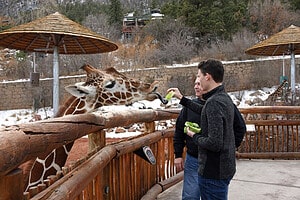A treasure trove of natural wonders awaits those who venture through the gates of a zoo. These captivating havens of biodiversity offer a window into the intricacies of the animal kingdom. With their vibrant colors and musical calls, a kaleidoscope of creatures creates a world of untamed beauty. From majestic elephants to graceful cheetahs and mischievous lemurs, these eclectic collections of wildlife are like living works of art, magnifying the earth’s incredible ecosystems. England has many amazing zoos, but which one is the largest? Let’s take a closer look at the incredible largest zoo in England and all it offers!
What Are Zoos and What Is Their Purpose?

Many zoos aid in preserving and protecting at-risk species, like the greater one-horned
rhinoceros
.
©iStock.com/Stefan Rotter
A zoo is a captivating establishment that showcases a diverse range of animals from across the globe. Originally known as “zoological gardens,” zoos serve as enchanting sanctuaries for all kinds of different animals. They also provide visitors with an extraordinary opportunity to observe these creatures up close.
Today, many zoos have emerged as crucial players in the realm of conservation. They breed endangered species, conduct animal behavior studies, and educate the public about the wonders of wildlife. With educational programs catering to all ages, from immersive school field trips to engaging family workshops, zoos strive to foster deep understanding and appreciation for the animal kingdom. Moreover, these establishments actively engage in research, delving into the intricacies of animal behavior, health, and reproduction. Through their scientific findings, zoos contribute invaluable insights that aid in the preservation and well-being of animals in their natural habitats. They play a vital role in preserving the fragile balance of our shared world.
What Is the Largest Zoo in the England?
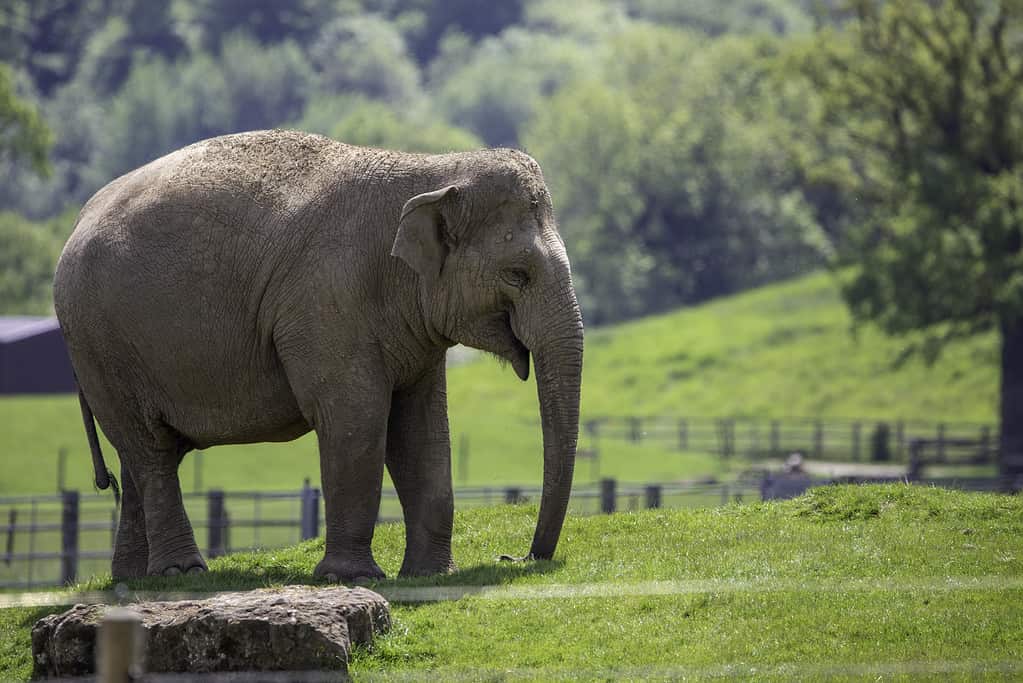
A beautiful view of an adult elephant walking in ZSL Whipsnade Zoo, United Kingdom
©Wirestock/iStock via Getty Images
The largest zoo in England is Whipsnade Zoo, located north of London on the Chiltern Hills near Dunstable in Bedfordshire. Covering a vast 600 acres, the zoo is so large that you can drive a car or use the zoo’s bus service to visit all the exhibits! Or you can always use the Great Whipsnade Railway. Commonly known as the Jumbo Express, this is another fantastic way to experience the zoo.
Whipsnade Zoo is home to at least 10,000 different types of animals, many of which are endangered in the wild. Not only is it the largest zoo in the U.K., but it is also one of the largest wildland conservation parks in Europe! In addition to its many beautiful animals, Whipsnade Zoo also offers several educational tours and the chance to sleep over at the Lookout Lodge, located inside the zoo. There are also opportunities to meet the animals (and even feed some of them!), and guests can also experience being a “keeper for a day” as well.
Whipsnade Zoo opened in May 1931. It was an instant hit with visitors, receiving more than 38,000 guests the Monday following its opening. Later, During World War II, it became a sanctuary for animals from other zoos as well, offering solace to evacuated species from London’s Park Zoo. As bombs rained down in 1940, the Woodland Park Zoo witnessed a staggering 41 explosions shake its grounds. Miraculously, the zoo’s physical structures remained largely unscathed. Today you can still see remnants from the zoo’s wartime history. Some of the tranquil ponds on the grounds are actually remnants of the bomb craters that once scarred the land.
Where is the Largest Zoo in England Located on a Map?
The largest zoo in England, the Whipsnade Zoo, is found in Whipsnade near Dunstable in Bedfordshire. It is north of London on the Chiltern Hills, in the southeastern region of England. The zoo is just a little over an hour’s drive from London. From above, it’s easy to locate due to the enormous Whipsnade White Lion, a stunning geoglyph carved into one of the chalk hills of the Dunstable Downs.

The Whipsnade Zoo Lion has been a feature of the area since 1933.
©Stephen Boyd/iStock via Getty Images
Born from the artistry of R.B. Brooke-Greaves, the Whipsnade Zoo Lion was completed in 1933. The impressive design was created from chalk, meticulously carved to reveal the underlying white marl beneath (a soft, earthy material consisting of calcium carbonate and clay). On occasion, the Whipsnade Zoo illuminates the lion at night. Initially, it was meant to serve as a visual warning to pilots, reminding them to fly high above the zoo’s airspace. However, over the years the Whipsnade Zoo Lion has become a treasured icon and landmark in the area.
Conservation at the Whipsnade Zoo
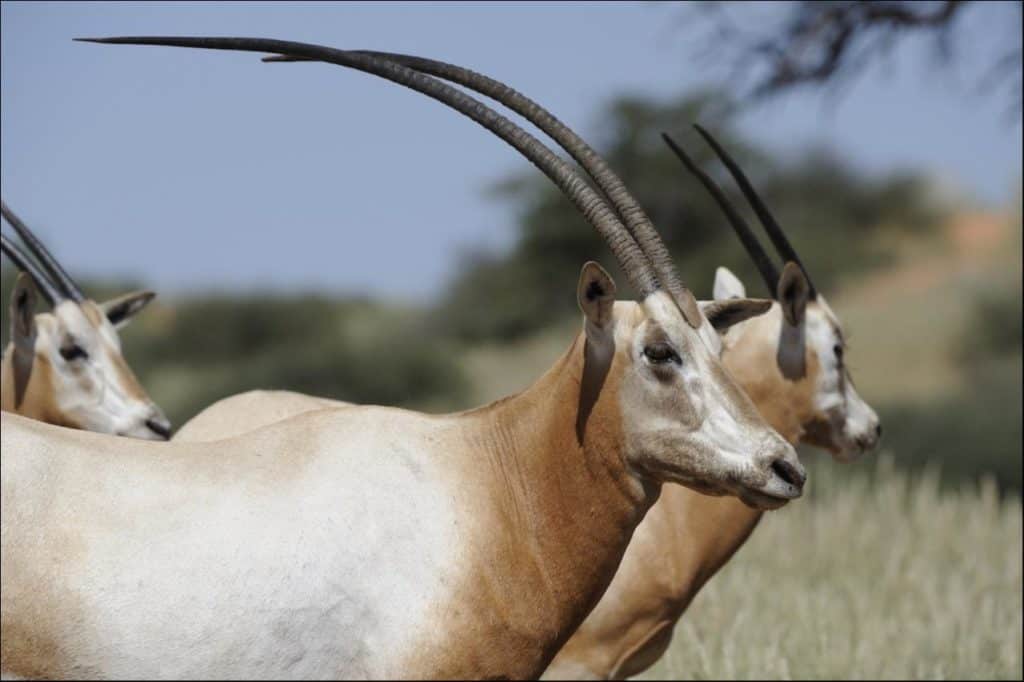
The
scimitar-horned oryx
gets its name from its horns, which are each shaped like large scimitars.
©WOLF AVNI/Shutterstock.com
Whipsnade Zoo isn’t just your ordinary zoo — it is a vital part of the global conservation efforts led by the Zoological Society of London (ZSL). Visitors may enjoy seeing the animals roaming throughout the park, but behind the scenes, a thriving hub of conservation action is happening, such as the life-saving breeding programs for endangered creatures like the majestic scimitar-horned oryx.
The zoo also works to safeguard native species living within its 600-acre domain. In fact, there are over 1,500 species of native plants and animals living around the zoo, from badgers and moles to cinnabar moths and grizzled skipper butterflies! In addition, dedicated teams of scientists, conservationists, rangers, and community workers associated with the zoo diligently toil across the globe, safeguarding species and restoring their habitats in the wild.
The chalk downs grassland of Whipsnade Zoo is also recognized as a Site of Specific Scientific Interest (SSSI). A sanctuary for orchids, butterflies, and 100 badger face sheep, the site is carefully managed to ensure its natural biodiversity. In addition, Whipsnade Zoo has also installed bat hibernacula (hibernating chambers) for six native bat species, including brown long-eared bats, common and soprano pipistrelles, barbastelles, Natterer’s bats, and Daubenton’s bats. Native birds like the red kite and the corncrake have also benefited from the zoo’s conservation efforts through breeding, protection, and reintroduction programs.
What Can I See at Whipsnade Zoo?
From thrilling exhibits and events to daily animal talks and presentations, Whipsnade Zoo offers a plethora of enticing events for visitors of all ages. The zoo offers sleepovers in Lookout Lodge, animal encounters, exciting tours, and many other wonderful events throughout the year. Of course, when you go to a zoo, you want to see all the incredible animals! So, here are just a few of the amazing animals you can see for yourself if you visit Whipsnade Zoo.
Animals From Europe, Asia, and Africa
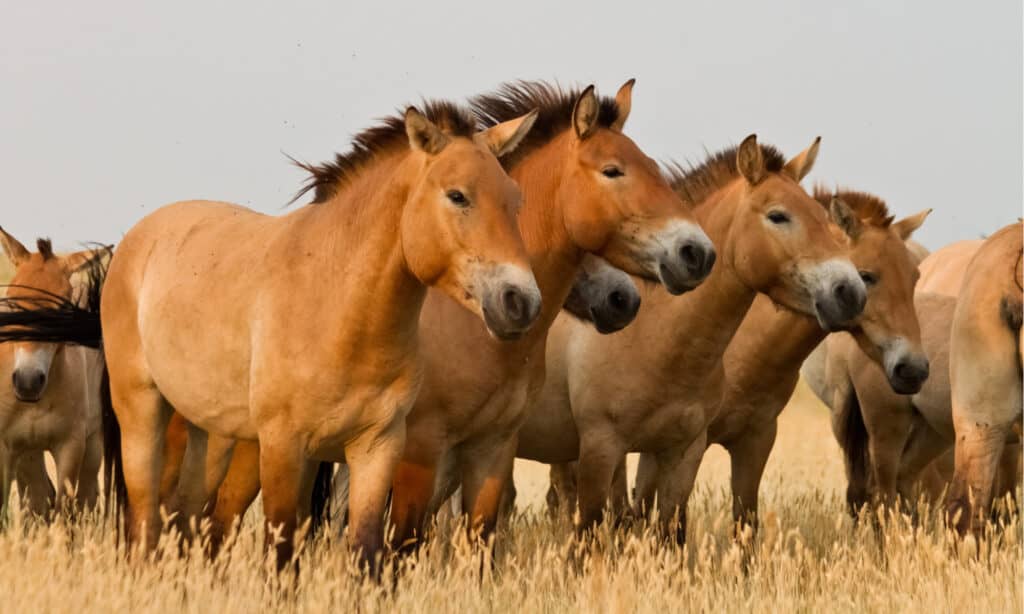
Due to conservation efforts, Przewalski’s
horse
returned to Mongolia after a 30-year extinction!
©Yantar/Shutterstock.com
In the Europe section of the zoo, you can see incredible animals like brown bears, wild boars, lynx, reindeer, and wolverines. There is also a fun penguin exhibit, featuring two colonies of African penguins and rockhopper penguins.
The African section of the zoo is home to a family of endangered bongos, a stunning antelope with unique stripes. You can also visit the lemurs, and even join keepers for the daily lemur walkthrough to get a better view of the zoo’s lemurs as they sunbathe near their waterfall area. There are also white rhinos, giraffes, lions, meerkats, and beautifully painted African wild dogs. Near the Africa outpost, you can see the endangered oryx, or check out the zebras, cheetahs, and hippos.
Over in the Asia habitat, the zoo’s top-of-the-art Center for Elephant Care houses an Asian elephant herd. If you take the Great Whipsnade Railway or drive your car, you can see many extremely rare animals roaming their open-air habitats, like Przewalski’s horse and Père David’s deer — a species that is actually extinct in the wild! In addition, herds of sika deer like to hang out near the natural lake, along with domestic Bactrian camels and flocks of lapwing. The Rhinos of Nepal habitat is a great example of ZSL’s conservation work. Here, the zoo’s greater one-horned rhinos enjoy heated indoor pools where they can wallow in muddy water all throughout the year. Visitors can observe the rhinos both indoors and in their outdoor paddock.
The Butterfly House, Aquarium, and Hullabazoo Farm
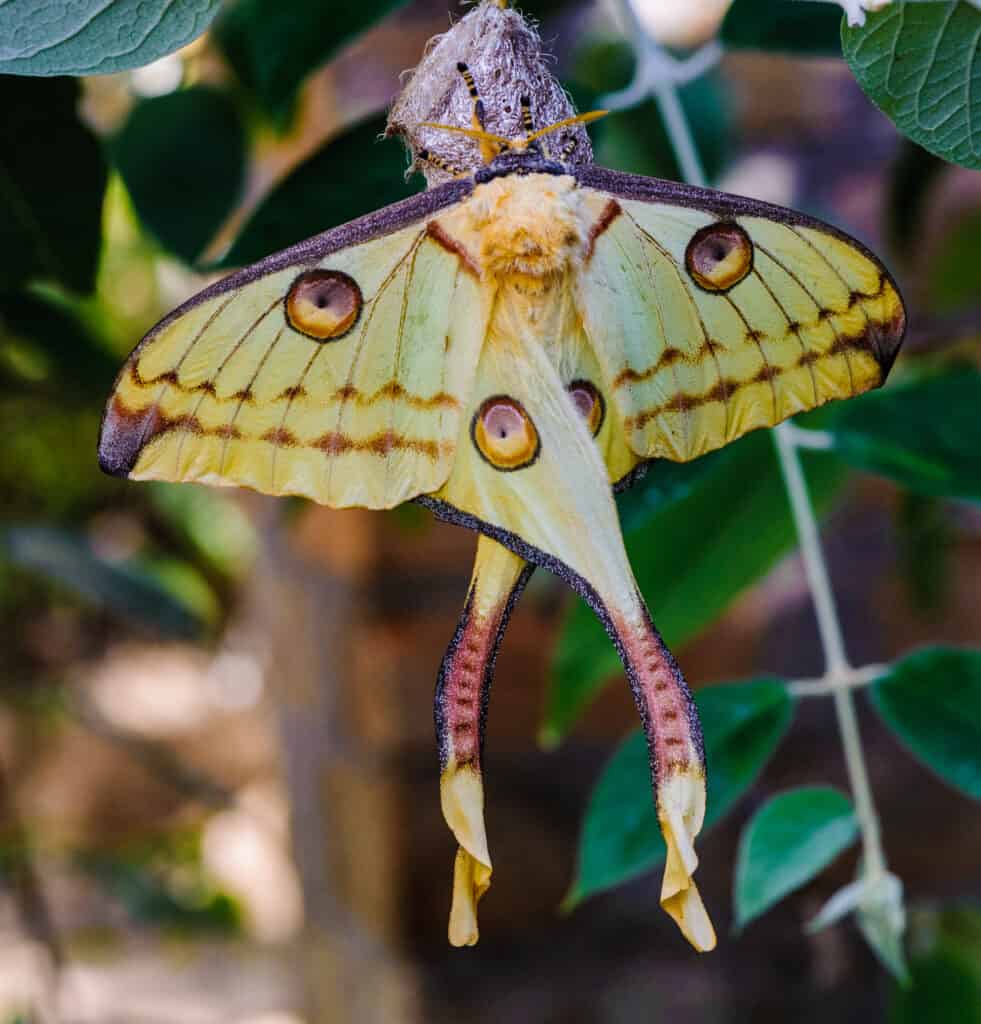
Hundreds of butterflies live in Whipsnade’s
Butterfly
House, including the Madagascan comet moth.
©Anton_Ivanov/Shutterstock.com
It seems only fitting that one of the largest butterfly biomes of any zoo in the U.K. happens to be at the enormous Whipsnade Zoo. The zoo’s incredible Butterfly House is home to over 30 different butterfly species. Here, visitors can learn all about the metamorphosis cycle of butterflies. They can also experience being surrounded by hundreds of different species flying around them! Guests can also check out one of the smallest crocodile species in the world, the African dwarf crocodile.
The aquarium at Whipsnade Zoo showcases many of the at-risk marine ecosystems around the world. In the Flooded Forest, for example, you can see incredible species like the sickle-backed brycon and chocolate rhinoceros suckermouth catfish. There are also bizarre cave-dwelling fish without scales, color, or even eyes! Cichlids from Lake Tanganyika in Africa can be seen in a myriad of colors, as well as the last living populations of the La Palma pupfish.
For an interactive adventure for your little ones, just head over to the Whipsnade Zoo’s Hullabazoo Farm. Visitors can get up close and personal with all kinds of adorable barnyard buddies. Children love visiting the zoo’s pygmy goats, sheep, pigs, miniature donkeys, and rabbits. The darling guinea pigs at the Hullabazoo Farm also have their own village, complete with Christmas celebrations, the “Spotted Pig” pub, and their own individual cottages!
The photo featured at the top of this post is © Wirestock/iStock via Getty Images
Thank you for reading! Have some feedback for us? Contact the AZ Animals editorial team.




